There’s no question about it, brakes are one of the most important parts on a car. Inexpensive but vital, brake pads are necessary for your brakes. But with so many options on the market, it can be difficult to track down the right replacement set. When searching for a new set in a crowded market, it sometimes feels like you need an expert to help you out.
The truth is that the buying process is actually a lot more simple than it seems at first glance. All brake pads available on the market today pass rigorous governmental inspections that ensure a high level of product safety. Sizing is quite simple, and once you know the specifications you’re looking for, it’s not too hard to find something that will fit your car. It’s easy to find something that will work, but finding the best set is a different story. To help you in your hunt for the best pads available we’ve combed through all the products on the market and returned with a list of our top ten favorites.
- Factors to Consider When Buying Car Brake Pads
- Top 10 Best Car Brake Pads 2025
- 1. Best Overall Brake Pads: Bosch QuietCast Premium Ceramic Disc Brake Pad Set
- 2. Best Nissan Brake Pads: Power Stop Z23 Evolution Sport Brake Pads
- 3. Quietest Brake Pads: Wagner ThermoQuiet Ceramic Disc Pad Set
- 4. Bosch QuietCast Disc Brake Pads
- 5. Best Premium Brake Pads: Power Stop Z26 Extreme Street Performance Brake Pads
- 6. Best GM Brake Pads: ACDelco Professional Ceramic Front Disc Brake Pad Set
- 7. Wagner QuickStop Ceramic Disc Pad Set
- 8. Best Budget Brake Pads: ACDelco Advantage Ceramic Rear Disc Brake Pad Set
- 9. Longest-Lasting Brake Pads: Akebono ProAct Ultra Premium Ceramic Brake Pad Set
- 10. Best Truck and SUV Brake Pads: Power Stop Z36-1363 Truck and Tow Brake Pads
- Guide to Buying the Best Car Brake Pads for 2025
- Frequently Asked Questions
- Wrapping Up
Factors to Consider When Buying Car Brake Pads
There is a huge range of differences when shopping for new brake pads, and new materials on the market have greatly expanded the number of products available. Take a look at these features below when thinking about a brake pad purchase.
Material
The materials brake pads use are limited, so most are constructed of a variation on one of these four materials:
- Ceramic Brake Pads: Brake pads with a ceramic surface are the highest-performing and highest-price variation of brake pads available. These pads were originally only available on performance vehicles, but in recent years the technology has become more accessible and more durable, enabling its expansion into the mass market. The pads are made of a tightly-packed composite ceramic bound together by non-metallic filler materials. Ceramic pads have better heat dissipation, but they don’t function as well in sub-zero temperatures. They are also quieter than other types of brake pads.
- Organic Brake Pads: Organic brake pads are the most common type of brake pads in the United States, coming stock on around two-thirds of all cars sold in the country. Originally, organic pads were made out of carcinogenic asbestos, but since then the material has been changed to various combinations of rubber, kevlar, glass, and fiberglass. These variations are relatively quiet but don’t perform as well in intense driving, making them most suitable for city driving and commuting.
- Metallic Brake Pads: Metallic brake pads were formerly the highest-performing type brake pad until they were surpassed by ceramic technology. Now they’re a niche product for a category of buyers that mainly value performance.
- Low-Metallic Brake Pads: Low-metallic brake pads combine metal with organic compounds to create a pad with good heat transfer capabilities. Although braking distances are typically in the same range as with ceramic pads, the pads are noisy and can produce a lot of dust.
- Semi-Metallic Brake Pads: Semi-metallic pads are high performing and have good heat transfer capabilities. Although they are inexpensive, the abrasive material wears down other parts of the brake system quickly.
Durability
Brake pads can last anywhere from 25,000 to 65,000 miles, so when a product seems like a good deal, consider that a more expensive version could last over twice as long. More performance-oriented brake pads tend to be less durable, so the best braking and heat-dissipation often comes with a compromise.
Compatibility
Brake systems on cars are usually unique to a specific manufacturer, meaning each brake pad will only fit one type of brake system, although many manufacturers use the same system on multiple vehicles. On the packaging or online listing of a specific product, you can see exactly which vehicle those brake pads are compatible with. You can also physically measure dimensions of brake pads by hand. Pro tip: your car owner’s manual will usually give you exact part numbers for compatible and recommended brake pads.
Front/Rear
Every wheel requires two brake pads. They are normally sold in sets of two (four pads total), either for the front two or rear two wheels. When purchasing, check which wheels the brake pads are designed for. Occasionally sets are sold in packs of four (eight pads), for both front and rear wheels.
Price Range
Most brake pads range cost between $20 and $100, but a more expensive part doesn’t necessarily mean better performance. High price luxury cars typically have fewer aftermarket options available, driving up the price. If you have a much more common sedan, SUV, or mass-market vehicle, there will probably be a wide range of inexpensive offerings available.
Outside of pricing variations due to availability, more expensive brake pads usually contain nicer, higher-performing materials, the highest performing typically being ceramic. Some more expensive versions might also carry stronger warranty protections and product guarantees.
| Product | Material | Front/Rear | Rating |
|---|---|---|---|
| Bosch QuietCast Premium Ceramic Disc Brake Pad Set | Ceramic/Semi-Metallic | Rear | 5 |
| Power Stop Z23 Evolution Sport Brake Pads | Ceramic/Carbon Fiber | Rear | 5 |
| Wagner ThermoQuiet Ceramic Disc Pad Set | Ceramic | Front | 4.5 |
| Bosch QuietCast Disc Brake Pads | Ceramic | Rear | 4.5 |
| Power Stop Z26 Extreme Street Performance Brake Pads | Ceramic/Carbon Fiber | Rear | 4.5 |
| ACDelco Professional Ceramic Front Disc Brake Pad Set | Ceramic | Front | 4 |
| Wagner QuickStop Ceramic Disc Pad Set | Ceramic | Rear | 4 |
| ACDelco Advantage Ceramic Rear Disc Brake Pad Set | Ceramic | Rear | 4 |
| Akebono ProAct Ultra Premium Ceramic Brake Pad Set | Ceramic | Rear | 4 |
| Power Stop Z36-1363 Truck and Tow Brake Pads | Ceramic/Carbon Fiber | Front | 3.5 |
Top 10 Best Car Brake Pads 2025

Editor’s Rating:
Specs
- Material: Ceramic/Semi-Metallic
- Front/Rear: Rear
Topping our list are the Bosch QuietCast Premium pads, a value-oriented offering meant for daily drivers. The pads are made of Bosch’s proprietary ceramic/semi-metallic material which incorporates a rubber core meant to keep things durable and quiet. Bosch is a legendary name in the industry, introducing both anti-lock braking and stability control to the market. The QuietCast pads aren’t as revolutionary as these technologies, but they have some of the most powerful and consistent braking available today.
The pads come with lubricant and stainless steel hardware included, a thoughtful touch by Bosch which means you’re ready for installation as soon as the box arrives at your doorstep. In fact, the aftermarket retention clip that Bosch includes is actually better than the factory hardware from Honda!
Bosch’s pads are uniquely formulated with a mix of ceramic material and semi-metallic abrasive material. The ceramic material stays quiet even after thousands of miles of use, and although some semi-metallic pads sometimes can overheat and cause undue wear over the rest of the brake system, Bosch’s formulation stays relatively cool during operation. The pads are also certified copper-free, a requirement that will be implemented by the US government in 2025 due to health concerns. It’s comforting to see that Bosch is ahead of the curve on this one.
Car Model Compatibility
The set contains four pads, which will mean you can equip each rear wheel with a new set. This particular iteration of the QuietCast Premium line (part number BC1451) fits the Honda Accord and Acura TSX, but the series of products has offerings that are manufactured for most sedans sold on the American market.
Durability
While the Bosch pads are coated in a chemical spray that permeates a protective coating over the material, brake pad life is still sub-standard on these pads. In most cases, they simply won’t last as long as the pads that came installed from the factory. With a price on the budget side of mid-range, though, you’ll still end up saving money in the long term.
Pros
- Stainless steel hardware included
- Certified copper-free
- Powerful and consistent braking
- Budget price beats durability over time
Cons
- Less durable than factory pads
2. Best Nissan Brake Pads: Power Stop Z23 Evolution Sport Brake Pads
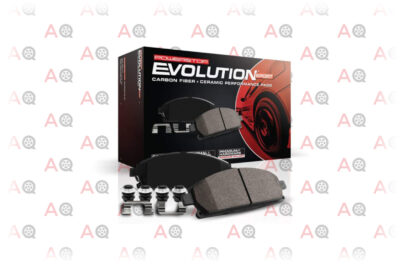
Editor’s Rating:
Specs
- Material: Ceramic/Carbon Fiber
- Front/Rear: Rear
Power Stop is one of the biggest aftermarket brake brands sold in the US, and the company has carved out a strong niche by creating a new category in car modification: upgraded brakes. While most companies merely focus on replacement brake parts, Power Stop spends much of its budget on research and development to actually improve braking products. This comes at a cost, but Power Stop pads are some of the best-performing pads on the market, although they’re typically only available for more performance-oriented vehicles.
With this offering, Power Stop has taken a step back from its sportscar roots to release a line of brake pads for mass-market passenger vehicles. The pads are made from Power Stop’s signature compound, a low dust carbon fiber/ceramic offering designed to stop on a dime. The process to break in the pads is simple and clean, and afterward, you’ll have high-power, squeak-free brakes for thousands of miles.
The technology also repels heat and resists the corrosion that some metallic-based pads experience. The pads do come at a price higher than average, but they improve on other Power Stop pads’ durability. What you end up with is a piece of technology superior to other versions on the market for a slight price premium.
Car Model Compatibility
Our highlighted model of brake pads, the Z23 series can be equipped on most variations of recent-model-year Nissan manufactured cars. The most common vehicle models, among others, are the Infiniti EX, the Nissan Pathfinder, and the Nissan Altima.
Durability
The brake pad compound’s durability is decent but not great, and although the ceramic/carbon fiber hybrid delivers high braking performance, it wears out quickly. That being said, it does have the benefit of low dust production, meaning that irritating particulate matter won’t coat your car, brake calipers, and wheels.
Pros
- High-power braking
- Corrosion-resistant
- Low dust production
- Easy break-in process
Cons
- High price
- Below-average durability
3. Quietest Brake Pads: Wagner ThermoQuiet Ceramic Disc Pad Set

Editor’s Rating:
Specs
- Material: Ceramic
- Front/Rear: Front
Wagner ThermoQuiet pads are a relatively economical option made by a storied but small auto parts manufacturer founded in St. Louis. The ThermoQuiet technology features a brake pad with a large surface area to make for quieter braking by better distributing brake vibrations. The surface of the pad itself is laser etched, which helps reduce break-in time and improves stopping distances.
The pad has a single-piece construction, meaning that the braking material itself is directly fused to the plate which inserts into the caliper. This construction improves durability at the price of heat retention, so these pads may experience some “heat fade” in heavy braking situations like long mountain descents.
The pad features a proprietary design with a single slotted heat-dissipation groove to improve lifespan. The ceramic construction and innovative design features Wagner incorporates are testimony to a well-thought-out process by a reputable manufacturer. Although these aren’t factory parts, the combination of quality and price make them a top pick for typical drivers.
Car Model Compatibility
This specific version of Wagner ThermoQuiet pads fits Lexus NX and RX models through 2020 as well as Toyota Highlanders and Siennas. Other Wagner pads fit other models, but the company typically manufactures components for mid-range vehicles.
Durability
With a well-thought-out construction, hardwearing pad compound, and stainless steel hardware, durability is a plus. These should last as long, if not longer, than the factory option. Unfortunately, there is no warranty available, which is a little bit of an oversight for an otherwise solid product.
Pros
- Exceptional durability
- Single-piece construction
- Improved stopping distances
- Laser-etched pad surface
Cons
- Some heat fade
- No warranty
4. Bosch QuietCast Disc Brake Pads

Editor’s Rating:
Specs
- Material: Ceramic
- Front/Rear: Rear
The first thing to note with this set of pads is that they are made by German multinational conglomerate Bosch. On precision-made Japanese vehicles made by companies like Nissan, you need a precise manufacturer to ensure that the parts fit properly. Here, Bosch lives up to the Nissan quality standard and provides a pad that integrates seamlessly into the overall braking system. Note that these are pads are a mid-range version of our top pick, the Bosch QuietCast Premium.
The Bosch pads use a proprietary combination of materials for the braking surface itself, with a rubber multilayer shim for quiet performance reinforcing a coarse copper-free ceramic pad. The whole pad is coated in a semi-metallic friction layer for a bit of added protection. Installation can be tricky due to the pads’ smaller-than-average size, and some buyers have reported missing hardware, which would delay installation.
As a ceramic pad, the performance is efficient with minimal heating as the system warms up. Brake distance is virtually the same as the factory-installed pads. Bosch’s QuietCast technology is utilized with a proprietary material formulation that keeps braking quiet even immediately after installation, so no break-in period is necessary. Pads are slightly below average in price but not inexpensive.
Car Model Compatibility
These Bosch pads are intended for most brake systems under the Nissan brand hierarchy, which includes both Nissan and Infiniti. The same braking system was also used on the Suzuki Vitara. These brake pads come for rear brakes.
Durability
Durability is above average for ceramic pads due to Bosch’s proprietary chemical formula which permeates the pad to form a protective layer. A nice bonus with this technology is that it actually improves the life of the brake rotor itself, leading to a longer lifespan of the entire brake system.
Pros
- Bosch’s protective proprietary coating improves durability
- QuietCast ceramic technology
- Smooth and powerful braking
- German quality
Cons
- Tricky installation
- Occasional missing components
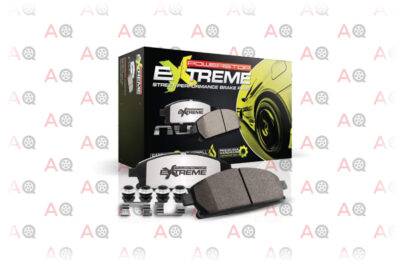
Editor’s Rating:
Specs
- Material: Ceramic/Carbon Fiber
- Front/Rear: Rear
On the expensive side of the price range, Power Stop manufactures a high-end brake pad that emphasizes performance at all costs. And they fulfill their promise, with razor-sharp braking distances and solid, long-lasting performance—it just happens to cost over two and a half times what mid-range competitors cost.
The brake pad is unique in that it utilizes carbon fiber as part of the pad, incorporated into the ceramic stopping surface. This material is great for muscle cars, as it has enough punch to slow down heavier cars with brawny engines, but resists the wear and corrosion caused by demanding driving. Installation is easy and aided by stainless steel fittings that represent an upgrade from factory hardware.
Stainless steel shims are inserted between the brake pad and the backing plate, placing an additional layer of heat insulation between the brake pad and the brake system. This heat insulation is vital for repeated braking from high speed, something you might experience if you go to the track often. And while these brake pads will also serve you well for day-to-day driving, where they really make the difference is at the track. So if you’re planning on doing serious performance driving, considering picking up one of these sets.
Car Model Compatibility
The Power Stop Extreme Performance pads fit on performance offerings from several manufacturers. The set will fit on Cadillac’s ATS and CTS, Dodge Challengers and Chargers, Corvettes from 2015 to 2019, and recent model year Chevrolet Camaros.
Durability
While being heat resistant and punchy, the carbon fiber/ceramic composite isn’t the most durable material in the world and as such will not last as long as factory ceramic or semi-metallic pads. The cost-conscious should look elsewhere.
Pros
- Excellent stopping power
- Upgraded stainless steel hardware
- Good heat insulation
- Carbon fiber/ceramic composite
Cons
- Over twice as expensive as competitors
- Below-average durability
6. Best GM Brake Pads: ACDelco Professional Ceramic Front Disc Brake Pad Set
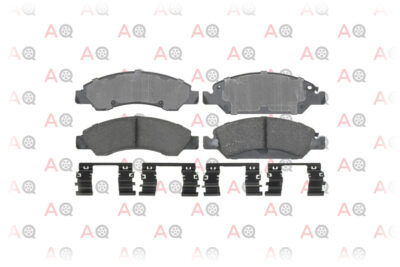
Editor’s Rating:
Specs
- Material: Ceramic
- Front/Rear: Front
The ACDelco Professional Ceramic Disc Brake Pad Set is relatively similar to the Advantage Ceramic Disc Brake pads made by the same company. These pads are an upmarket iteration of the Advantage line, with added quality testing and an updated pad compound. The price is increased as well, and these pads sit at the expensive end of the spectrum.
These pads are tested to a strict quality control requirement called SAE J2784 which ensures not only braking efficacy, but also a minimum durability and wear requirement. Evaluated as well is the noise, vibration, and harshness of the braking. Not many pads on the market get tested to this standard, and therefore products that get approved with this seal of quality are notably desirable.
Braking is confident but can feel a little harsh or touchy at times. The pad itself is made out of a ceramic/semi-metallic hybrid compound that lends itself to quiet but sharp braking. The pads are molded to the backing plate with a proprietary method that bonds the material tightly. For this reason, no curing is required, which means there is no break-in period after installation.
Car Model Compatibility
As an ACDelco product, these pads only fit General Motors cars, particularly higher-end SUVs and trucks. Included are the Cadillac Escalade, Chevrolet Avalanche, Chevrolet Suburban, and GMC Yukon.
Durability
With a ceramic compound and SAE J2784 quality testing, this pad has above-average durability. There’s no manufacturer-quoted mileage life expectancy, but you can expect to get about as much life out of this set as you’ll get with the factory-installed pads.
Pros
- SAE J2784 Quality Testing
- No break-in period
- Updated brake pad compound
Cons
- Expensive
- Harsh braking
7. Wagner QuickStop Ceramic Disc Pad Set

Editor’s Rating:
Specs
- Material: Ceramic
- Front/Rear: Rear
Wagner returns to our list with a QuickStop brake pad compound offered in their lineup alongside their latest ThermoQuiet formulation. This set of brake pads pursues a more budget-friendly product fit compared with Wagner’s higher-end options.
The product really excels in terms of factory fit. One of the biggest complaints with aftermarket pads is not the braking performance itself, but the fact that the pads are manufactured without the exact factory specifications, making them difficult or lopsided to install. Wagner seems to have cracked the factory code on these pads, with a snug fit that matches even OEM pads.
With a ceramic construction, the pads inspire confidence with sharp braking performance. The cured ceramic technology brakes smoothly, but the material itself is noisy and can squeal at times, although this is mitigated with proper setup. The setup itself is easy and hard to mess up with clear instructions included alongside stainless steel hardware and lubricant.
Car Model Compatibility
While Wagner offers QuickStop pads for numerous factory fitments, this particular model (the ZD1293) is a mid-range budget offering available for mid-range budget vehicles like the Toyota Camry, Toyota Avalon, and Lexus ES. Be careful, as these pads don’t fit the newest 2019 and 2020 models.
Durability
The ceramic material is relatively durable, but ceramic pads are simply not as hardwearing as other materials. For this reason, pads will probably not last as long as factory-fitted parts. The pads are quite affordable, which takes some of the sting out of the so-so durability.
Pros
- Affordable price
- Snug fit for installation
- Sharp braking
Cons
- So-so durability
- Brake squealing
- Doesn’t fit latest 2019 and 2020 car models
8. Best Budget Brake Pads: ACDelco Advantage Ceramic Rear Disc Brake Pad Set
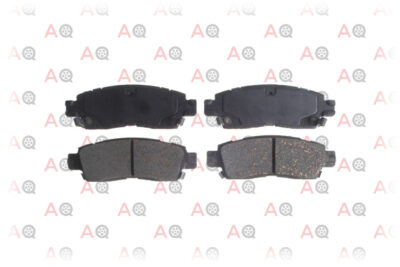
Editor’s Rating:
Specs
- Material: Ceramic
- Front/Rear: Rear
When ceramic brake pads first came to the mainstream market, they were an expensive offering not even available for mass-market cars—for this reason, it was originally thought that budget-sensitive buyers wouldn’t even consider ceramic pads. As the technology has become more broadly adopted, the price has fallen, and now some pads like these are available for under $30.
The ceramic technology lives up to the hype in this case, as these pads offer excellent stopping power with little-to-no brake fade as the system warms up. As expected with ceramic pads, the braking power is delivered smoothly and quietly. Like most brake pads on the market, this set includes mounting hardware to fasten the pads to the calipers. While convenient, it’s pretty much expected for this type of product. Although this hardware is included, installation can be a little tricky due to the strange brake pad shape, and properly aligning the pads with the rotors can take some time.
These pads are manufactured by ACDelco, an car parts brand owned by automotive giant General Motors. They only service GM vehicles, so products produced by the company are specifically designed and manufactured for major GM brands like Chevrolet, GMC, and Buick. While these pads might not be identical to the ones that originally came with your car, they are designed for the same size specifications by a manufacturer that has extensive experience making parts for GM vehicles.
Car Model Compatibility
This brake pad set is made for a specific brake standard used by General Motors, so if your car isn’t one of GM’s major brands, these pads won’t work for you. The pads fit models from Buick, Oldsmobile, GMC, Chevrolet, and Saturn. The most common car models these pads fit are the Chevrolet Trailblazer and Traverse.
Durability
Durability, as with most ceramic pads, is slightly below average. The fact that these pads come from the GM factory itself is confidence-inspiring, as original equipment parts tend to last and perform for thousands of miles. We also appreciate the one year warranty ACDelco offers.
Pros
- Smooth and quiet braking power
- Ceramic at an affordable price
- One year warranty
- Factory manufactured
Cons
- Average durability
- Finicky installation
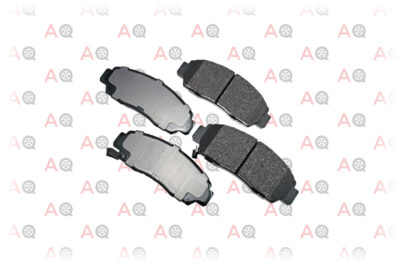
Editor’s Rating:
Specs
- Material: Ceramic
- Front/Rear: Rear
Niche manufacturer Akebono cracks our top 10 list with a premium offering for Honda and Acura owners. Akebono is a Japanese brand focused on a more premium segment of the market, and their products do show some premium touches, although performance is not notably better than other manufacturers. At around 50 bucks, these might be a little overpriced. For example, Bosch’s brake pad sets for the same type of vehicle cost about half the price.
What you’re paying for with these pads is Akebono’s legendary aftermarket name, as the company has a storied automotive reputation, especially with Japanese tuner-style vehicles. With these pads and most of the other Akebono pads on the market, a set of these represents a braking upgrade over the factory-installed pads. Control and precision manufacturing and material yields powerful stopping power, the pads are also smooth and quiet.
Akebono has been using the same proprietary ceramic material for years now, and although it is not a high-tech composite like other manufacturers have, it is long-wearing, quiet, and delivers consistent braking without fade even in demanding conditions. Be aware that Akebono has had some quality control issues in the past regarding sending the proper mounting hardware with the product, but their customer service team is easy to work with.
Although there are some convenient and thoughtful features, these pads are not superior enough to cheaper offerings by Bosch and Wagner to justify the price.
Car Model Compatibility
Akebono earns top marks for making a product that fits a broad pool of vehicles. This time their brake pads work for Hondas and Acuras, specifically Acura models CL, CSX, RL, TL, and TSK. They’ll also work on Honda’s Accord and Civic models, although the Civic changed braking systems in 2014.
Durability
Durability is a strong point for the Akebonos and the pure ceramic material has a long lifespan that will probably last longer than factory-installed pads. Akebono also has a quality guarantee for any defects or issues.
Pros
- Powerful stopping power
- Smooth and quiet braking
- Quality guarantee
Cons
- Overpriced
- Missing hardware issues
10. Best Truck and SUV Brake Pads: Power Stop Z36-1363 Truck and Tow Brake Pads
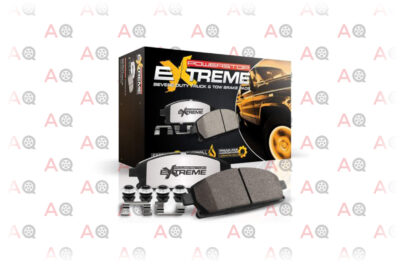
Editor’s Rating:
Specs
- Material: Ceramic/Carbon Fiber
- Front/Rear: Front
Power Stop makes a third entry on our list with a brake pad designed for heavy-duty SUVs and trucks. The main pro with this pad is sheer stopping force, as truck pads need to deliver reliable braking force during towing and hauling. Because of the safety concerns involved with carrying heavy cargo, we’d recommend these pads for anyone doing frequent towing or hauling in the bed of a truck.
These pads aren’t the cheapest on our list, but truck and SUV pads tend to be a bit more expensive due to their unique performance requirements. While there are inexpensive truck offerings out there, those doing towing generally need a more powerful pad. It’s just a shame they cost over twice as much as other brake pads. For anyone who has a truck or SUV that isn’t hauling or towing often, a cheaper pad will be sufficient.
While most Power Stop pads go after the performance vehicle market, this offering brings exotic materials to workhorse vehicles, providing a thoughtfully developed alternative to factory truck and SUV pads. Although expensive, these are also a good option for anyone finding their factory pads less than adequate.
Car Model Compatibility
This particular version of these pads is for GM subsidiaries Chevrolet, Cadillac, and GMC. The pads will fit the Cadillac Escalade, Chevrolet Avalanche, Chevrolet Silverado, Chevrolet Suburban, Chevrolet Tahoe, and the GMC Yukon. It’s a wide range for a group of high-quality haulers.
Durability
Durability is good, and it has to be due to the weight of the vehicles that these pads are stopping. The ceramic and carbon fiber matrix material is adapted from other Power Stop pads, so the compound is well tested in the performance market. Expect a lifespan similar to factory pads.
Pros
- Good stopping force
- Ceramic carbon fiber material
- Good for towing
Cons
- Truck and SUV specific
- Expensive
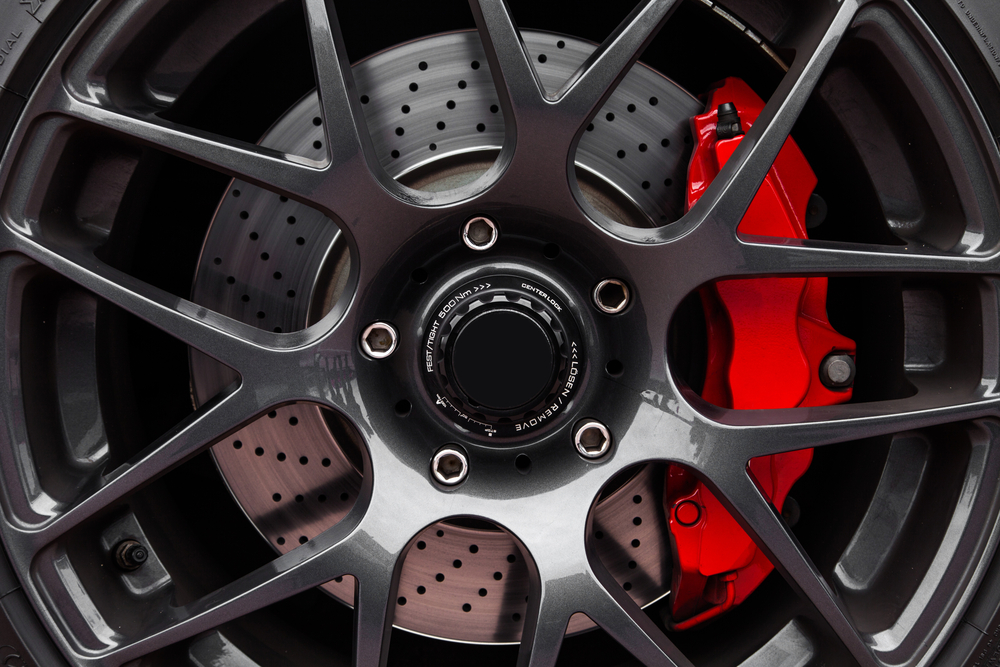
Guide to Buying the Best Car Brake Pads for 2025
It’s becoming easier and more common to order brake pads online and install them yourself, so the market is becoming more crowded. With a host of options, it’s sometimes hard to find out exactly which brake pads you need. Read on to learn more about finding the proper brake pads that will stop your car safely and quickly.
When Do I Need to Replace Brake Pads?
Brake pads typically last for around 25,000 to 65,000 miles of use, depending on what material is used. Your vehicle owner’s manual will probably have an estimated expected lifespan for your particular pads. But since there’s a lot of variation with brake pad life expectancy depending on what conditions you drive in, here are some other more accurate ways to determine if you need a new set:
- Illuminated Brake Indicator Light: Many vehicles, especially newer ones, incorporate a low-pad warning system which detects if the brake pad is worn down. This light could indicate a different brake issue, so make sure to read your car’s computer code to make sure it is your brake pads that need replacing and not some other part.
- Unusual Sounds: One of the first signs that your brakes pads are beginning to wear out is an unusual sound while braking. The sounds can vary, but typically it will sound like squealing, grinding, or screeching. The sound is actually caused by a metal pad embedded at the edge of the brake pad with the specific purpose of warning drivers that the pads need replacement.
- Vibrating Brake Pedal: If you feel a grinding, rumbling, or vibration when braking, it’s important to get your car off the road as soon as possible. This could mean that you’ve worn entirely through your brake pads, and you are now actually pushing the brake caliper itself against the brake rotor, causing expensive damage.
- Thin Brake Pads: If none of the previous indicators have appeared, but you know you’re close to needing a new set, you can take off your wheel and have a close look at the brake pads themselves to see how much pad material is left. Standard procedure says that anything less than one-quarter inch thick should be replaced.
Frequently Asked Questions
How Do I Install Brake Pads?
While brake pad installation can be intimidating, it is actually one of the simplest operations to perform on a vehicle. If you just know how to change a tire, you’re already halfway there.
As with a tire change, the car first must be jacked up to remove the wheel and access the brakes. Remove the wheel and the brake caliper and rotor will be exposed. To replace the brake pad, the caliper itself must be removed; it will be held in by a brake caliper pin that can be removed with a socket wrench. After the caliper is removed, the pads can be replaced. Brake pads just slide in with the included fastener.
If you’ve got a little mechanical know-how and you’re willing to take a crack, go for it! It’s really not too tricky, and it can help you save a lot of money. Check out the video below for a more detailed set of instructions.
What Size Brake Pad Do I Need?
Brake systems are not only manufacturer-specific, but they are also sometimes vehicle-specific, so it can be a little confusing to pick out the proper pad. Brake pads are measured in three dimensions: width, length, and thickness.
These measurements should only be used to find the proper pads when aftermarket pads specifically made for your vehicle aren’t available. Typically this will only be the case with older vehicles. If you can’t find a pad on the market that’s specifically designated for your vehicle, head in to your local mechanic shop who can help you measure your pads and give you some model numbers to look for when purchasing online.
With the advent of exotic materials in brake pads, now practically every vehicle model has expensive aftermarket pads available that promise to boost braking performance. But are these expensive pads worth the hype?
If price isn’t an object, the answer is yes. Typically, more expensive pads can help contribute to a better braking system overall. Ceramic pads or high-end organic pads have better heat dissipation, are usually a little quieter, and can last longer. For the cost, though, improvements are quite marginal. Stopping distances can be improved only by two to four feet, or up to ten feet in extreme circumstances.
At the end of the day, though, any brake pad on the market that fits your car will do a perfectly adequate job of stopping your vehicle. Pads go through rigorous testing before they can be brought to the market and companies are particularly careful to develop high-quality brake pads due to liability involved. If you’ve got the budget, spring for an expensive pad, but the difference probably won’t be immediately noticeable.
Should I Buy the Same Brake Pads That Came With My Car Originally?
Most car dealers will typically recommend that you buy the same pads that came with your car originally and there’s a good reason for that—the parts are cheap to make but expensive to sell, which makes them a nice way to pad car dealers’ margins.
For consumers, though, it’s a pain. These parts are typically only available directly from manufacturers, which means you’ve got to pay whatever they ask. This is the main reason that there is such a large market for aftermarket brake pads, since third party brake pads can be up to five times cheaper than versions direct from the factory.
A car dealer would argue that factory brake pads are specifically designed to function optimally with that manufacturer’s braking system, which might be true for some car models. But many automakers use a mass-manufacturing approach to brake pads, outfitting all of their models with the exact same pad. This makes the argument for factory brake pads a little bit flimsier, and that doesn’t even include the fact that third-party brake pads have to meet the exact same quality standards as automakers.
At the end of the day, if you’re driving a typical mass-market car from a major manufacturer, an aftermarket brake pad will be practically indistinguishable from a factory part. With smaller manufacturers and boutique imports, you might be better served to go with an original equipment manufacturer part (OEM).
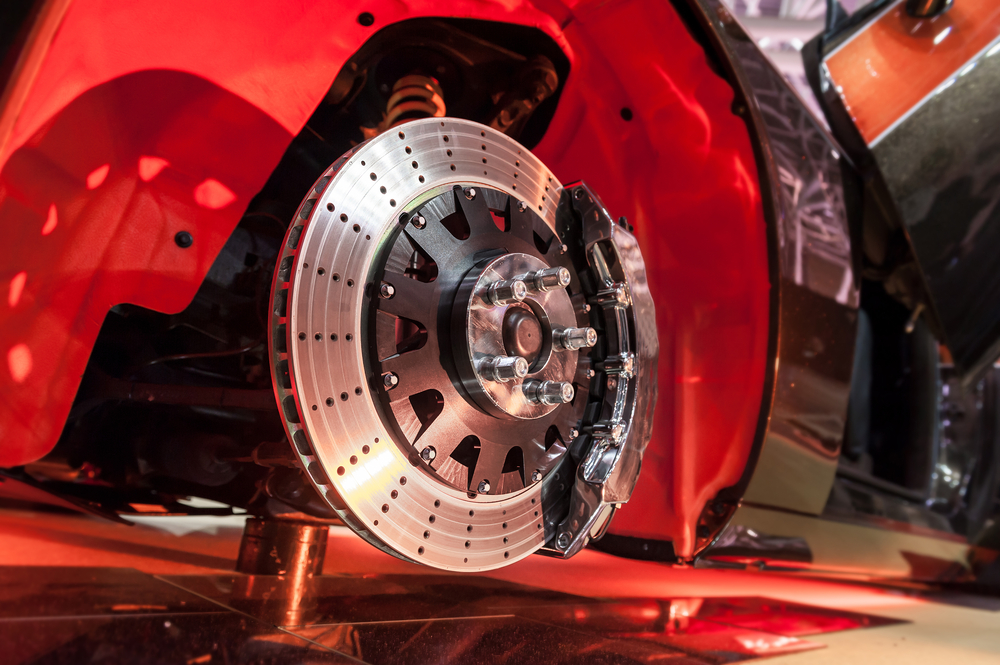
Replacing Brake Disc Rotors
Brake pads are not the only important part of a braking system; all braking components must work in harmony to stop a vehicle. An entire brake system involves pumps, brake fluid, hydraulic lines, brake pads, brake calipers, and brake rotors. Brake rotors are the metallic disc that is screwed onto the wheel itself. The brake pads squeeze this disc during braking to slow down the vehicle.
Just like brake pads, brake discs can wear out over time. Rotors last about 70,000 miles, which is quite a bit longer than the pads themselves, which typically can last in the best circumstances about 50,000 miles. Brake rotors are inexpensive and easier to change out than brake pads.
For good braking performance, it’s vital to swap out the rotors when necessary. To determine if you need new rotors, you can check for grooves being worn into the brake pads, or if there is vibration and wobbling when braking. Both can be characteristic of worn-out brake rotors.
You’ll also want to change your brake fluid regularly to keep everything in tip top shape, so be sure to check out our list of the best brake fluids available today.
Break-in Periods
Any time you install new brake pads, account for a small break-in period to”‘bed-in” the brakes before the pads can perform optimally. This break-in procedure exists to adhere an even layer of brake pad material onto the brake rotor itself. To safely perform this procedure, find a quiet stretch of road where you can get up to relatively high speed and brake quickly without endangering others.
The procedure, along with improving brake performance, will ensure there is minimal vibration and squealing when using your brakes. Start off at low speed and drive to a safe location. Once in that location, make three to four stops from 45 miles per hour braking aggressively (you don’t need to slam on the brakes, but brake hard). This will heat up the pads and rotors so they are not shocked by the heat and become warped.
The second and primary part of the procedure consists of about ten stops from 60 miles per hour to 15 miles per hour. Be firm, but don’t lock up the wheels. Accelerate immediately after, slowing down each time to keep each of the stops in rapid succession. Afterward, try to spend a period of time with minimal braking as your braking system will be quite hot, and more erratic braking could worsen the results of the bed-in procedure.
Afterward, your brakes are considered “bedded in” and you’ll be ready for thousands of miles of quiet and powerful braking performance!
Drum Brakes Versus Disc Brakes

In the early days of automobiles, every car came fitted with drum brakes that used hydraulics to stop the vehicle. Since then, the disc brake was developed, and the newest versions have huge performance benefits over drum-brake predecessors.
So what does this mean for car owners? For starters, it means you’ll have to check what kind of brake system you have. Plenty of modern cars still use drum brakes, although some manufacturers only use drum brakes in the front or rear. For these types of vehicles, you’ll only need one set of brake pads. If you have only drum brakes in the front and rear, you won’t need brake pads at all. Take a look at your owner’s manual under “Brakes” and you can learn more about what routine maintenance you need to perform on your braking system.
What Does OEM Mean?
When searching for brake pads online, you’ll often see parts being labeled as ‘OEM’ or ‘OE’ products. This can be confusing for a couple of reasons—What does OEM stand for? Is OEM a good thing? Do I need an OEM product?
OEM stands for Original Equipment Manufacturer, and it simply means that the part is the same product that comes stock on your original vehicle. When a car manufacturer picks a good part, OEM is a good thing. When a car manufacturer picks a cheap part, OEM is a bad thing. For non-OEM aftermarket parts, you can get disc brake pads that are huge upgrades on the equipment that comes stock with your vehicle, or you can get discount products that are probably lower quality than what came stock.
Typically, the one pro of an OEM product is installation and fitment. Your car was designed to work specifically with that factory-installed product, and whether braking performance is great or horrible, buying an OEM product means you’ll have a brake pad that fits snugly and is easy to install. But at the end of the day, an OEM product can be a good thing or a bad thing. It’s more important to evaluate each brake pad individually for the characteristics you’re looking for.
Wrapping Up
With more and more materials, aftermarket manufacturers, and options coming onto the market, it can be confusing to make a decision when shopping for some replacement brake pads. Thankfully, there’s a wealth of information online about trusted manufacturers, products, and fitments. No matter what, remember that installing your own brake pads is a tremendous way to maximize performance, save money, and learn a bit about your car in the process.


